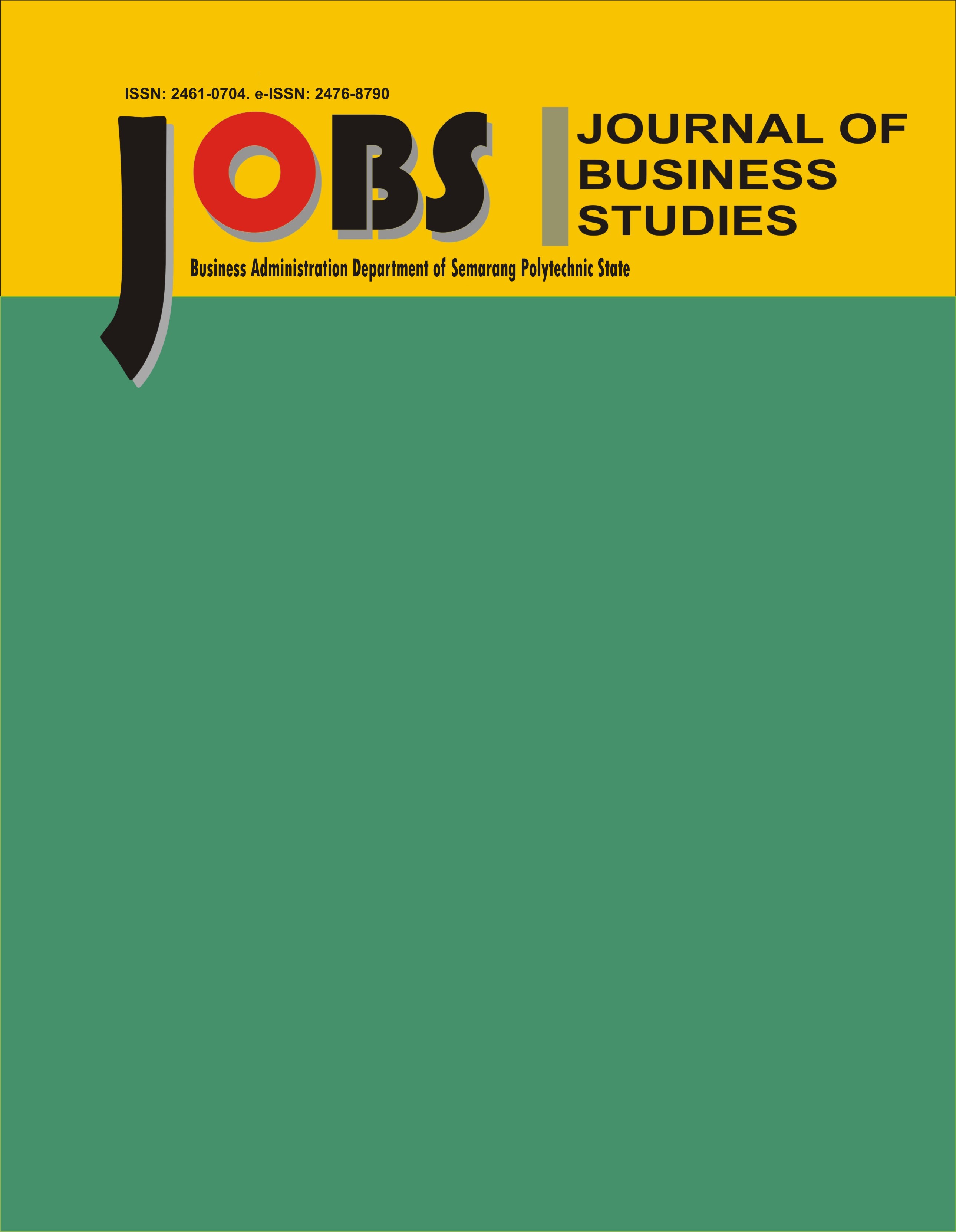PENGARUH TECHNIQUE QUALITY DAN PROCESS QUALITY TERHADAP CUSTOMER SATISFACTION (STUDI KASUS DWELLING TIME PADA TERMINAL PETIKEMAS SEMARANG)
DOI:
https://doi.org/10.32497/jobs.v3i1.1474Keywords:
quality, process quality, customer satisfaction, dwelling timeAbstract
The purpose of this research is to analyze the effect of technique quality and process quality on customer satisfaction (a case study of dwelling time in Terminal Petikemas Semarang) The methods used to analyze data are validity test, reliability test, assumption classic test, multiple linear regression method, t-test (partial), f-test (simultaneous), and the coefficient of determination test (Adjusted R2) Based on this research, the result of statistical F-test has significant value < significant level (0,000 < 0,05). It means that technique quality and process quality has a significant impact on customer satisfaction. From the result of coefficient of determination test, adjusted R2 has value of 0,607. It”™s mean that the impact of independent variable (technique quality and process quality) toward dependent variable (customer satisfaction) is at 60.7%, while the remaining 39.3% is influenced by other variables that outside in this research.Downloads
Published
Issue
Section
License
Authors who publish with this journal agree to the following terms:
Authors retain copyright and grant the journal right of first publication with the work simultaneously licensed under a Creative Commons Attribution License that allows others to share the work with an acknowledgement of the work's authorship and initial publication in this journal.
Authors are able to enter into separate, additional contractual arrangements for the non-exclusive distribution of the journal's published version of the work (e.g., post it to an institutional repository or publish it in a book), with an acknowledgement of its initial publication in this journal.
Authors are permitted and encouraged to post their work online (e.g., in institutional repositories or on their website) prior to and during the submission process, as it can lead to productive exchanges, as well as earlier and greater citation of published work (See The Effect of Open Access).






